#Piotr Naskrecki
Explore tagged Tumblr posts
Text
youtube
Economic growth and wildlife conservation often run in conflict, but Mozambican scientist Cesária Huo hopes to support a new fully sustainable and economically viable model for harvesting a potent natural resource: bat guano.
In the stunning landscapes of the Cheringoma Plateau in Mozambique, Cesária embarks on an expedition with her mentor, Professor Piotr Naskrecki, Ph.D., to survey the local population of bats. With the support of a team of passionate young researchers, they plan to meticulously catalog the region’s biodiversity – bats and beyond. They hope to ensure that no species inhabiting Cheringoma’s caves could be negatively impacted by the planned extraction of bat guano by the national company, Guano Moz. Guano is a valuable and potent biological fertilizer, and sustainably harvesting the resource from Cheringoma could be a boost to the local farming economy.
As Guano Moz seeks to create job opportunities through the guano’s extraction and processing, Cesária and her team plan a detailed survey of the cave’s bat colonies: their mating seasons, habits, and population numbers. If they find the right type of bats in the cave system, it signals a higher quality of guano that justifies the cost to harvest. Both Guano Moz and scientists from Gorongosa National Park aim to achieve a delicate balance between economic development and environmental stewardship, demonstrating that sustainable progress is possible when industry and conservation unite for a common cause.
#Nature on pbs#wild hope#solarpunk#Africa#bat#bats#guano#fertilizer#sustainable harvesting#Mozambique#Gorongosa National Park#Cheringoma Plateau#Cesária Huo#Piotr Naskrecki#Guano Moz#Youtube
3 notes
·
View notes
Text

Robust Climbing Salamander (Bolitoglossa robusta), family Plethodontidae, Tapanti National Park, Costa Rica
Photograph by Piotr Naskrecki
#climbing salamander#arboreal salamander#salamander#bolitoglossa#bolitoglossine#plethodontidae#amphibian#herpetology#animals#nature#central america
9K notes
·
View notes
Text
Me: I'm sexually attracted to that entomologist who let botfly larvae grow in his skin
My best friend: who the fuck am I in the car with right now?
#Tbf I really did just drop that on him like he didn't ask#Piotr naskrecki just know I'd risk it all for you
1 note
·
View note
Text

Six-banded Armadillo (Euphractus sexcinctus), family Chlamyphoridae, order Cingulata, Pantanal, Mato Grosso, Brazil
photograph by Piotr Naskrecki
823 notes
·
View notes
Text
Uncharismatic Fact of the Day
There's nothing hellish about the satanic leaf-tailed gecko! Named for its menacing appearance, with prominent devilish horns and bright red eyes, this species has actually evolved to perfectly camouflage with its environment! Their bodies are colored and shaped to blend in with dead and dying leaves, thus hiding from much scarier predators.

(Image: A satanic leaf-tailed gecko (Uroplatus phantasticus) by Piotr Naskrecki)
#satanic leaf-tailed gecko#Squamata#Gekkonidae#leaf-tail geckos#geckos#squamates#reptiles#uncharismatic facts
203 notes
·
View notes
Text

The coconut crab (Birgus latro) is the largest terrestrial arthropod in the world, with a weight of up to 4.1 kg (9.0 lb). It can grow to up to 1 m (3 ft 3 in) in length from each tip to tip of the leg. It is found on islands across the Indian Ocean, and parts of the Pacific Ocean as far east as the Gambier Islands and Pitcairn Islands, similar to the distribution of the coconut palm; it has been extirpated from most areas with a significant human population, including mainland Australia, Madagascar and Zanzibar.
Photo: Piotr Naskrecki
source: The Fabulous Weird Trotters
91 notes
·
View notes
Text

In-flight photograph of a bat (Lonchophylla mordax) pollinating a coatecomate tree (Cresentia alata) in Costa Rica.
Photo: Piotr Naskrecki
17 notes
·
View notes
Text

A Sip. Gorongosa National Park, Mozambique.
Piotr Naskrecki - Cambridge, United States - is an entomologist, conservation biologist, and photographer working in Mozambique to support local conservationists in their efforts to rebuild Gorongosa National Park after setbacks from the recent civil war. At the Museum of Comparative Zoology at Harvard, Dr. Naskrecki’s scientific research focuses on the evolution of communication in insects. He has been published in dozens of peer-reviewed papers as well as national magazines.
Source : BigPicture Photography Awards : Winner : Winged Life #wildlifephotography
11 notes
·
View notes
Text

Ground Pangolin (Smutsia temminckii), family Manidae, order Pholidota, Gorongosa National Park, Mozambique. photograph by Piotr Naskrecki
0 notes
Text





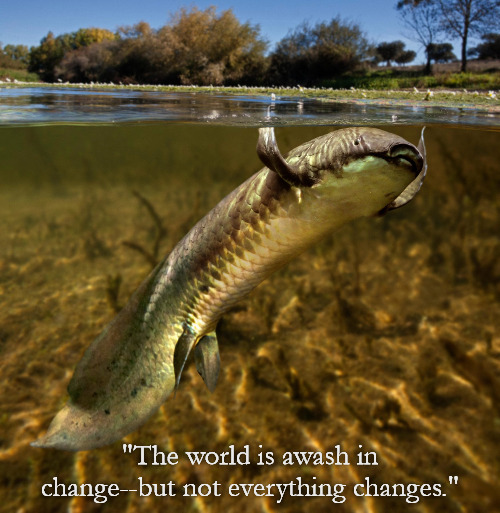


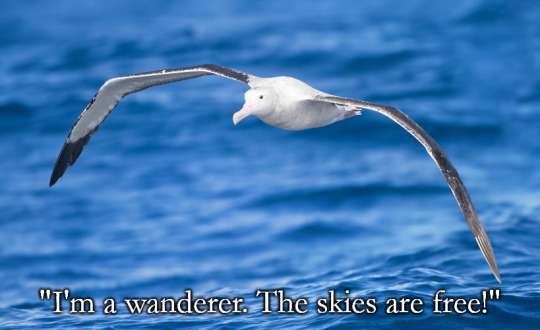




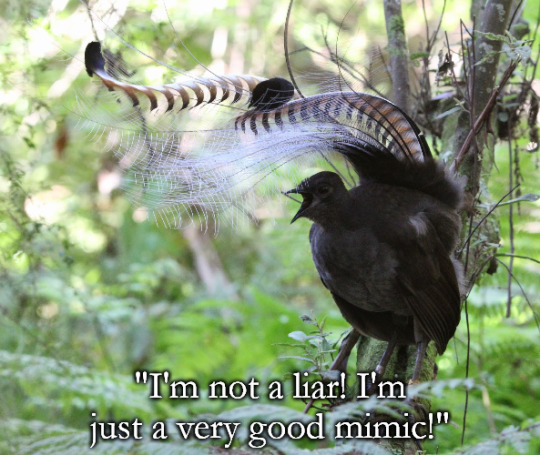

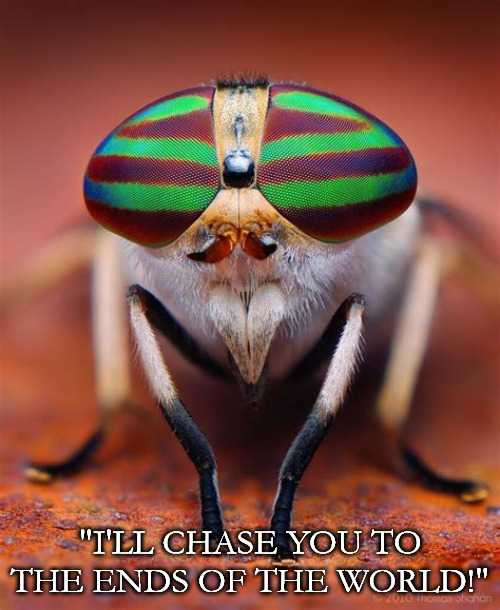

Pokemon Mystery Dungeon: Blue Rescue Team Quotes X Wildlife Photography
Image Sources:
1 Terry priest on Flickr 2 Venomous Visions UK 3 Juan Cruzado Cortés, some rights reserved CC BY-SA) 4 Agave Tequiliana by Stan Shebs on Wikimedia Commons 5 amenic 181 at https://www.istockphoto.com/photo/green-sprouts-gm520580320-91006587 6 Paulo Oliveira / Alamy Stock Photo 7 Paul D. Brook 8 ??? closest I could find was this 9 JJ Harrison 10 Michael & Patricia Fogden 11 ??? 12 Piotr Naskrecki 13 Aquarium of Pacific, Andrew Reitsma 14 Steve James, Worldbirder.blogspot 15 From https://www.vtherpatlas.org/herp-species-in-vermont/plethodon-cinereus/ 16 Thomas Shahan on Flickr 17 Phil-Champion, https://plants.ces.ncsu.edu/plants/drosera/
0 notes
Text
Photography: Wildlife Photographer of the Year Winners Show the Beauty — and Precarity — of Nature
— October 11, 2023 | By Rachel Treisman | NPR
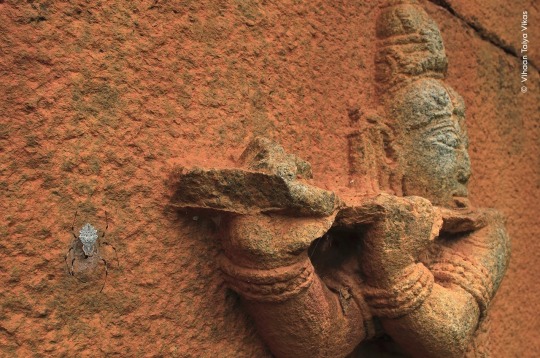
10 Years and Younger Winner: The wall of wonder. Nallur Heritage Tamarind Grove, Karnataka, India. An ornamental tree trunk spider prevents its prey from escaping. To the photographer, it seemed the spider had positioned its web after being entranced by the sound of Krishna's flute. Vihaan Talya Vikas/Wildlife Photographer of the Year

Animal Portraits Winner: Face of the forest. Tapiraí, São Paulo, Brazil. A lowland tapir steps cautiously out of the swampy Brazilian rainforest. They rely on the forest for their diet of vegetation and in turn they act as seed dispersers — an important relationship threatened by habitat loss, illegal hunting and traffic collision. Vishnu Gopal/Wildlife Photographer of the Year
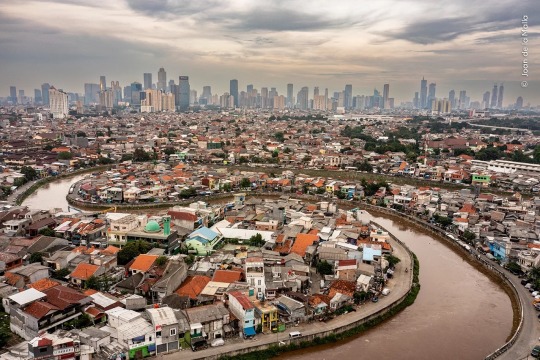
Wetlands Winner: The dead river. Ciliwung river, Jakarta, Indonesia. Plastic and human waste and agricultural fertilizers are suffocating the Ciliwung river. As a result, Jakarta's residents must use groundwater for drinking water, which has resulted in widespread subsidence. The city is now sinking. Joan de la Malla/Wildlife Photographer of the Year

Steven Johnson highlights a lump of spotted salamander eggs resting on a bed of sphagnum moss in a vernal pool near Shenandoah National Park, Virginia. Shallow seasonal pools like these are ideal amphibian nurseries because they’re safe from predators like fish. But these habitats are impacted by environmental change: Less predictable spring rains are causing pools to dry up before the young salamanders can fully develop and live on land. Photograph By Steven Johnson, Wildlife Photographer of the Year
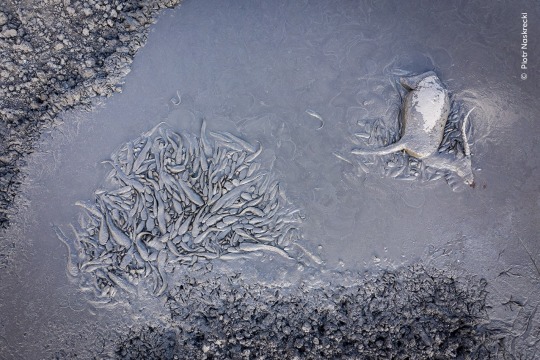
Piotr Neskrecki captured a group of African sharptooth catfish scavenging from a waterbuck that died after getting stuck in the mud—illustrating the cyclical nature of life at Gorongosa National Park in Mozambique 🇲🇿. Sharptooth catfish are omnivorous and can survive for several days out of water thanks to an air-breathing organ in their gills. If they do eventually perish while they wait for the rains to return, they provide food for other species. Photograph By Piotr Naskrecki, Wildlife Photographer of the Year
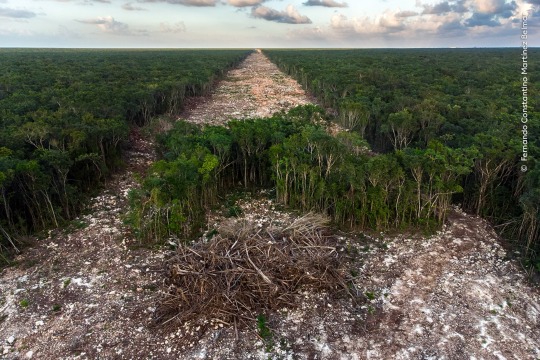
In this image, Mexican photographer Fernando Constantino Martínez Belmar shows how a new cross-country tourist railway line devastates the natural landscape in Paamul, Quintana Roo. The railway will bring economic benefits to southeast Mexico, but it also fragments the ecosystems, threatens protected reserves and archaeological sites, and impacts Indigenous peoples by destroying their land. Photograph By Fernando Constantino Martínez Belmar, Wildlife Photographer of the Year

Isaac Szabo photographed different species gathered near a river chub’s nest in a freshwater stream in Virginia’s Whitetop Laurel Creek. During springtime spawning, male river chubs sometimes carry rocks and pebbles as far as 33 feet to form a mound where eggs can be sheltered from currents and predators. Other minnow species also use their nests to keep their eggs safe. Photograph By Isaac Szabo, Wildlife Photographer of the Year
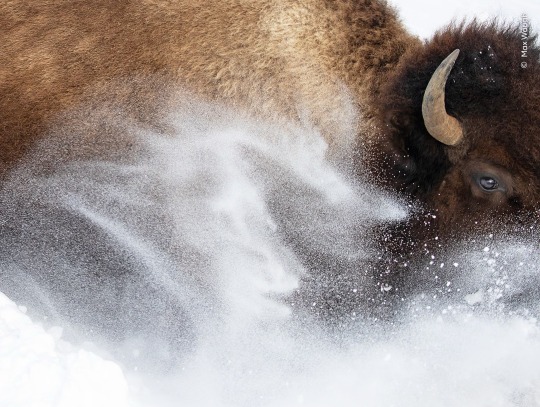
Max Waugh captured this bison barreling through the snow in Yellowstone National Park. Bison once roamed across North America, with populations of 50 to 60 million at the start of the 1800s—then less than a thousand at the end of the century. Today, their numbers are slowly increasing with careful conservation efforts. Photograph By Max Waugh, Wildlife Photographer of the Year
— Wildlife Photographer of the Year is developed and produced by the Natural History Museum in London.
0 notes
Text
A Map of Life Like None Other
2023-06-07 18:36:00A Map of Life Like None OtherIn among the most biodiverse put on the world, researchers are charting the remarkable web of life. The post A Map of Life Like None Other appeared initially on There’s a mental phenomenon called pareidolia that Piotr Naskrecki, an entomologist from Harvard University, typically considers on sluggish walks Gorongosa National Park in Mozambique.…

View On WordPress
0 notes
Text

Fiery-billed Aracari (Pteroglossus frantzii), family Ramphastidae, order Piciformes, Costa Rica
photograph by Piotr Naskrecki
744 notes
·
View notes
Photo
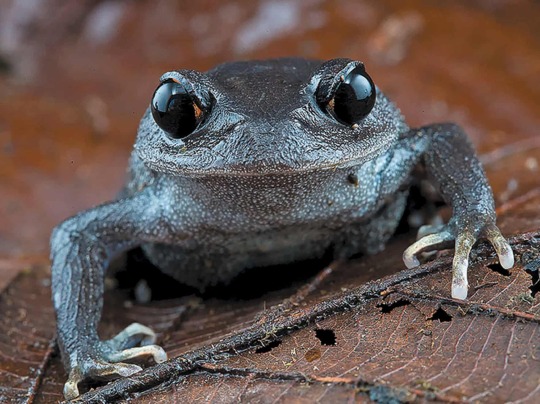
A big-headed frog, another of the 224 new species that have been found in the Greater Mekong area
Photograph: Piotr Naskrecki/WWF/WWF/PA
3K notes
·
View notes
Text

Waterbuck (Kobus ellipsiprymnus), male, family Bovidae, Gorongosa National Park, Mozambique
photograph by Piotr Naskrecki
221 notes
·
View notes
Photo

‘Pond Skim’ by Piotr Naskrecki
#art#photography#batman#water#flying#scary#creepy#piotr naskrecki#africa#gorongosa national park#wildlife#wild nature#lakshmi#nightscape#nightlife
70 notes
·
View notes